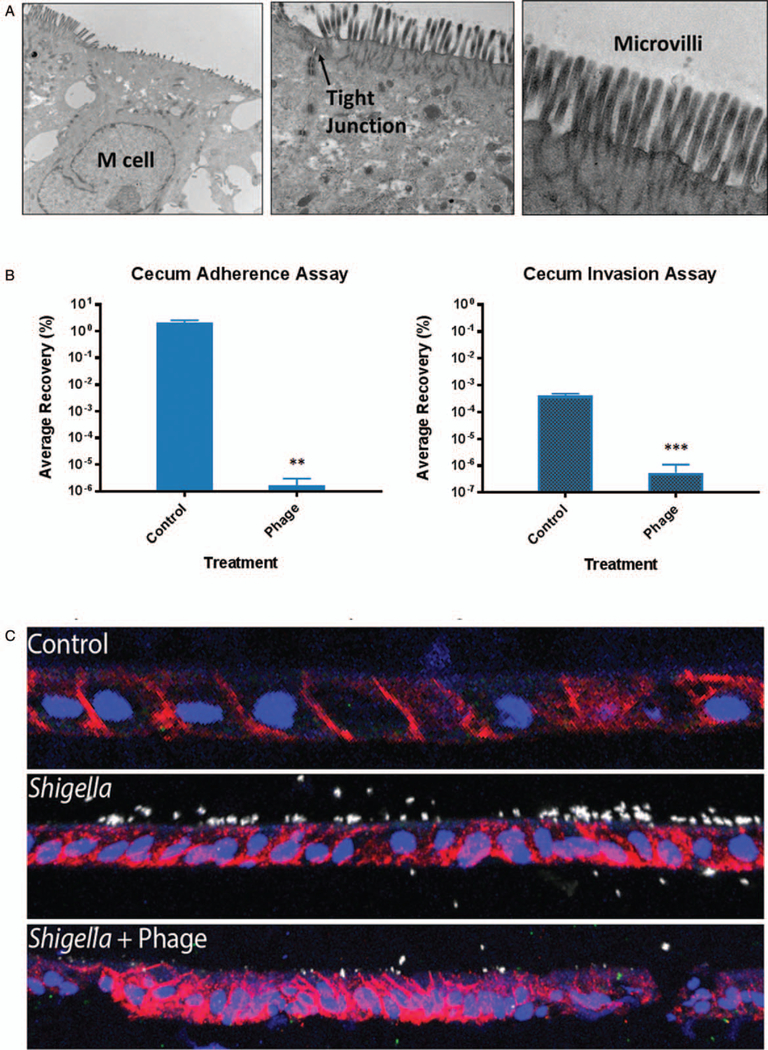FIGURE 4.

Efficacy of Φ2457T in the human intestinal organoid-derived epithelial monolayer (HIODEM) model. A, Cecum transmission electron microscopy (TEM) analysis showing M cells (absent microvilli, left, 12,000×), enterocyte tight junctions (middle, 25,000×), and mature enterocyte microvilli (right, 100,000×). B, Φ2457T prevents adherence (left, **, P = 0.01) and invasion (right, ***, P = 0.003). The average percent 2457T infection recovery is plotted ± SEM from 6 independent experiments, each with technical triplicates. C, Confocal immunofluorescence (red, EpCAM, intestinal epithelial cells; white anti-LPS Shigella; blue, 4’,6-diamidino-2-phenylindole [DAPI], nuclei) of uninfected organoids (top), 2457T infection control (middle), and 2457T infection with phage treatment (bottom). A reduction in 2457T infection (white) resulted from phage treatment.
